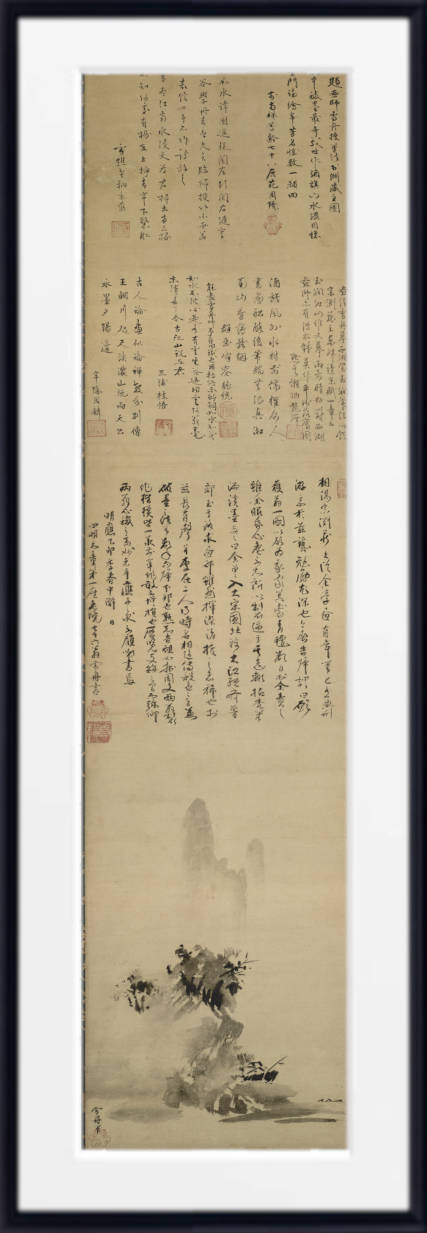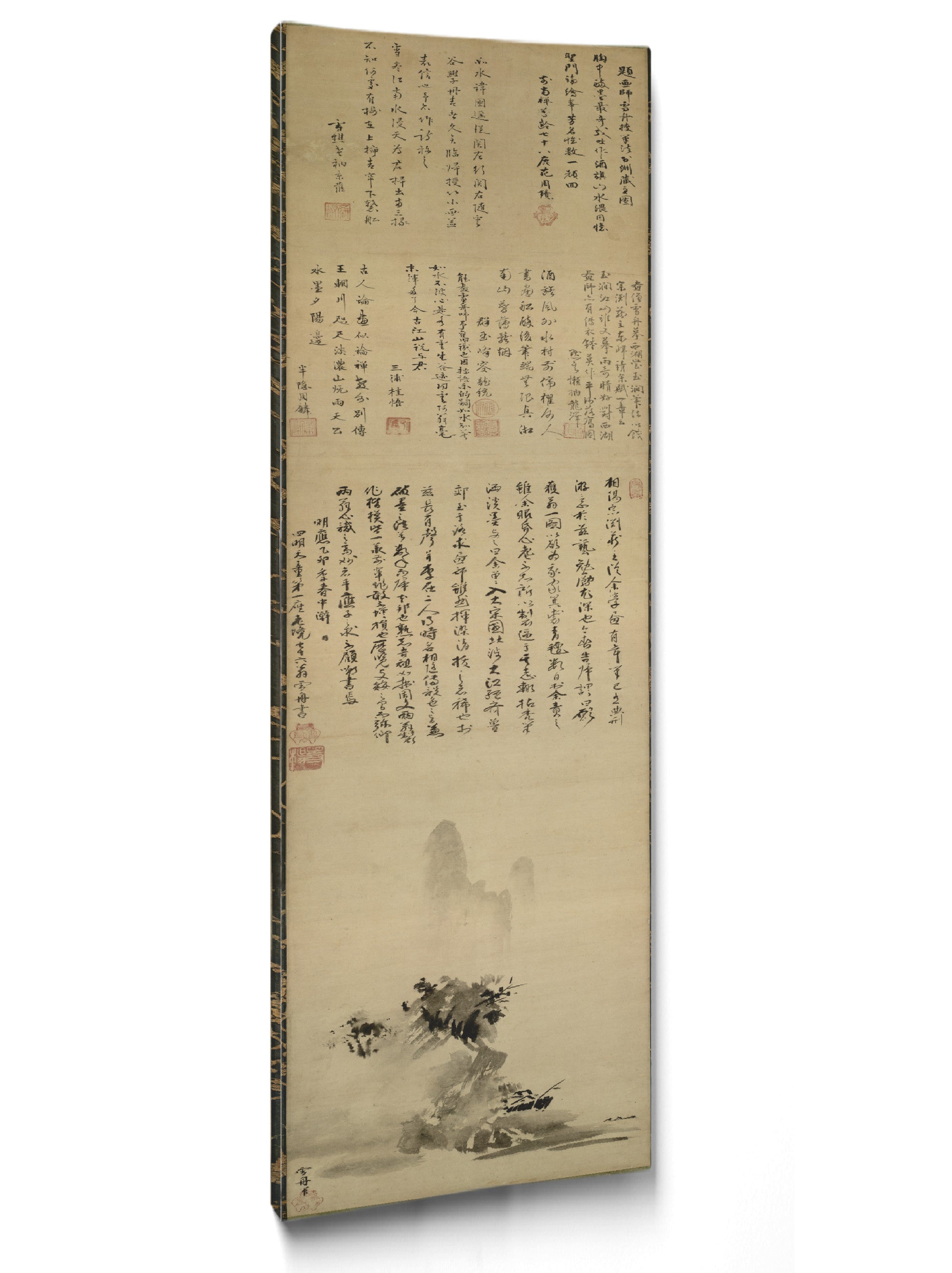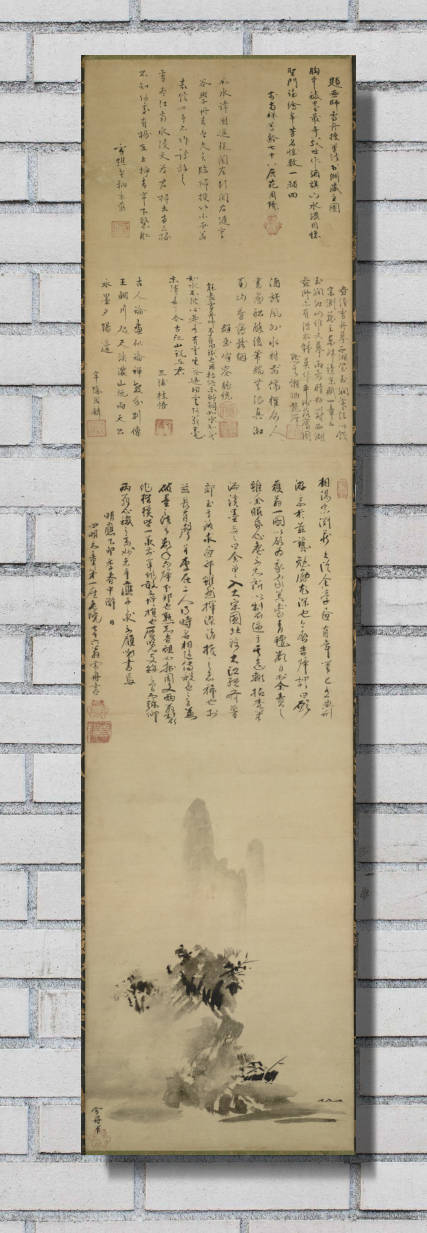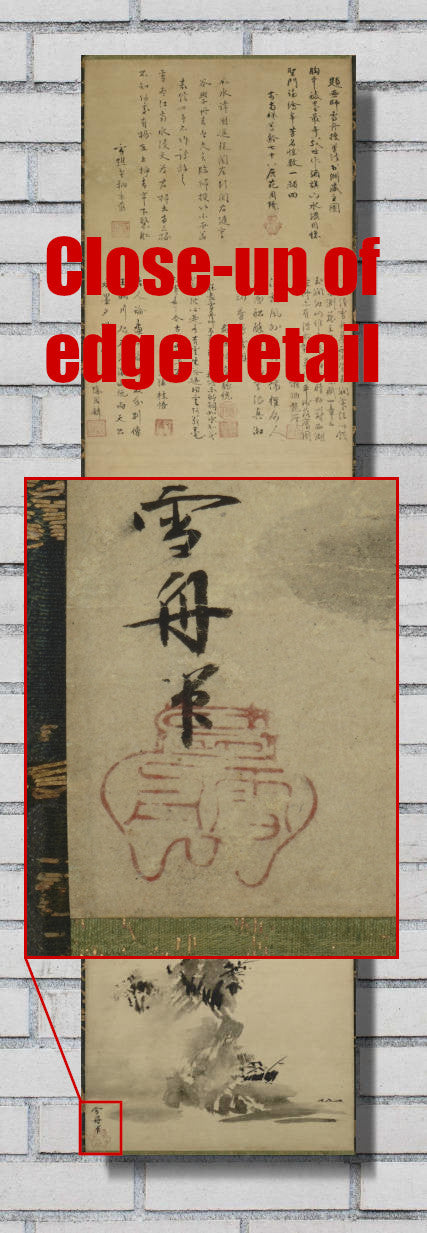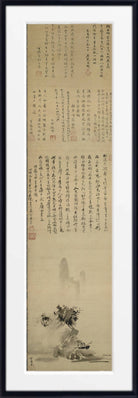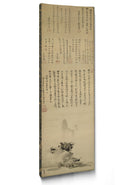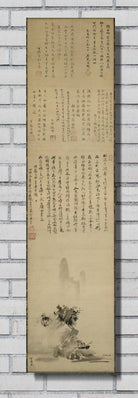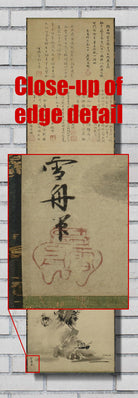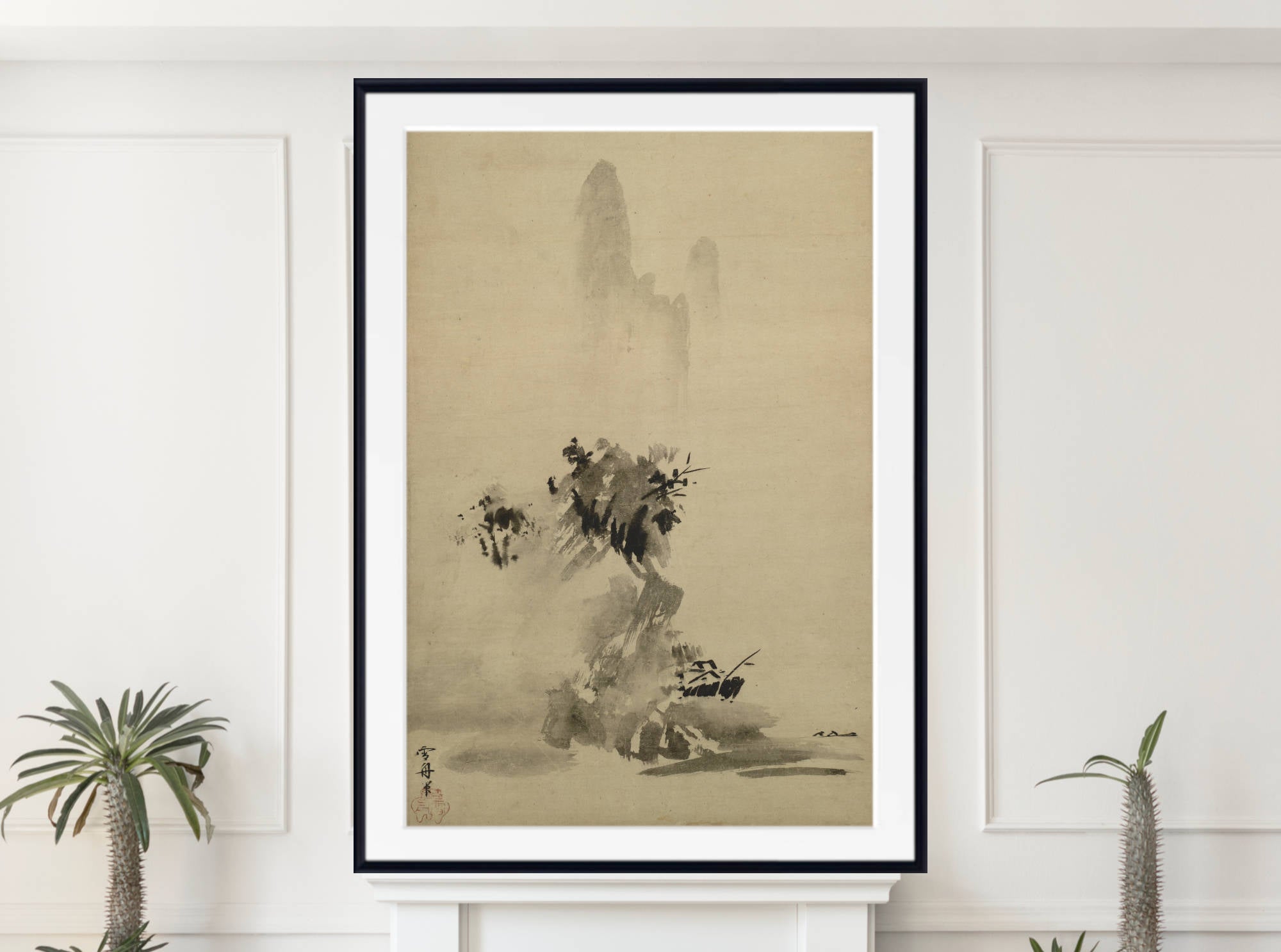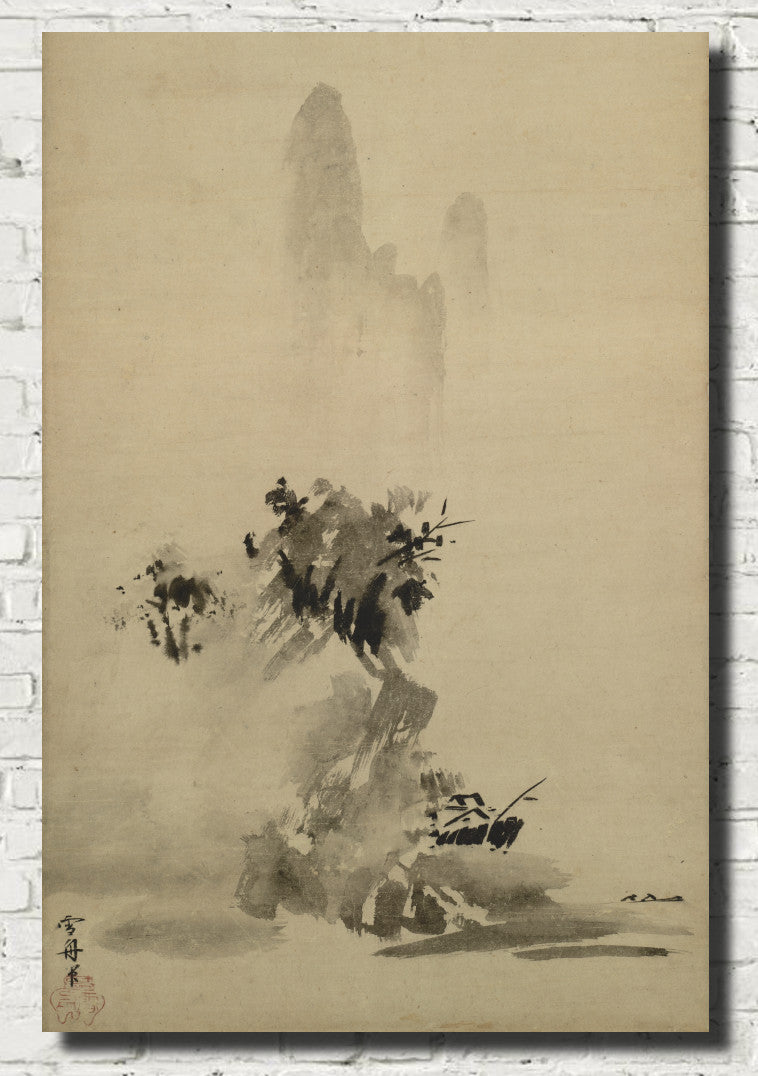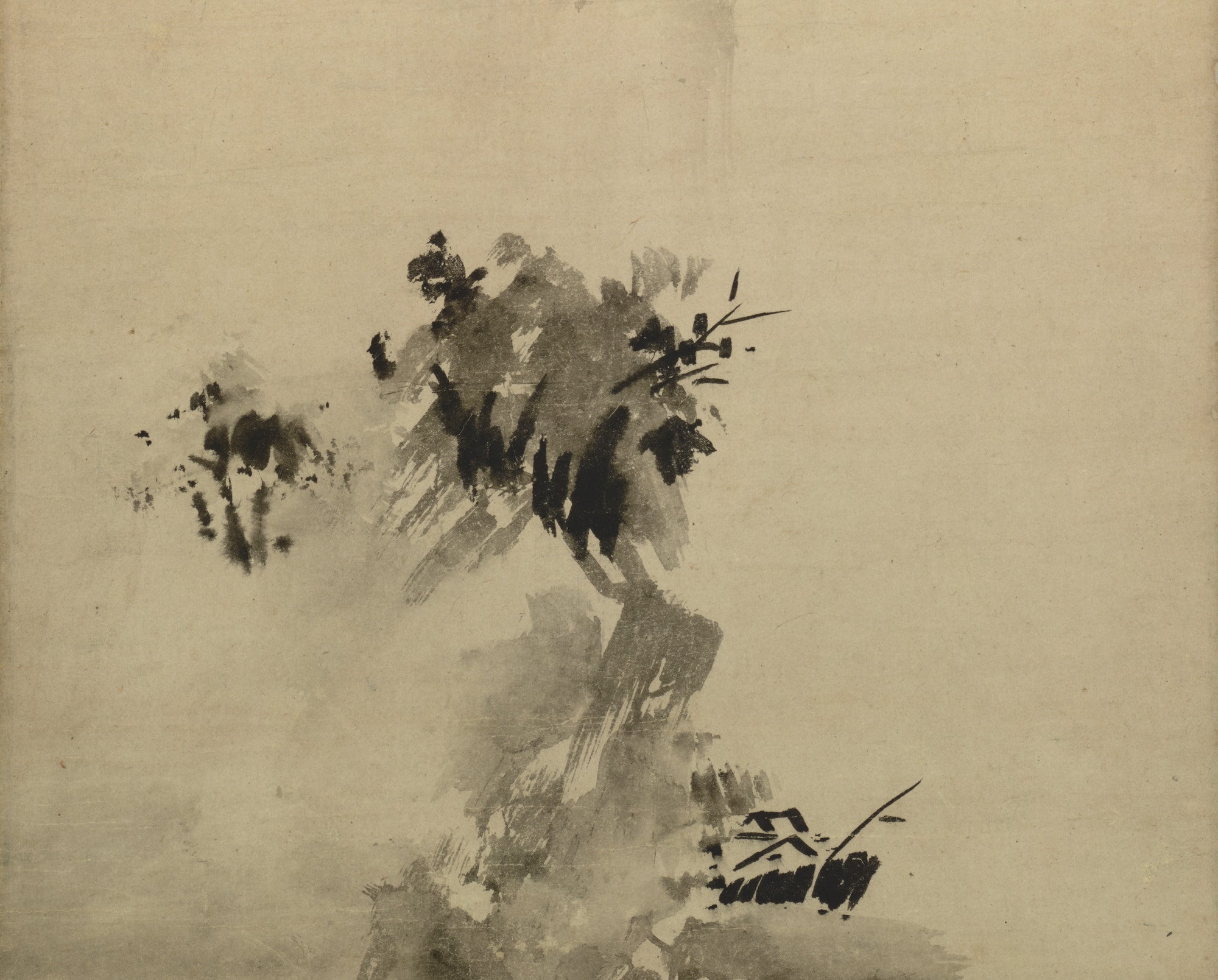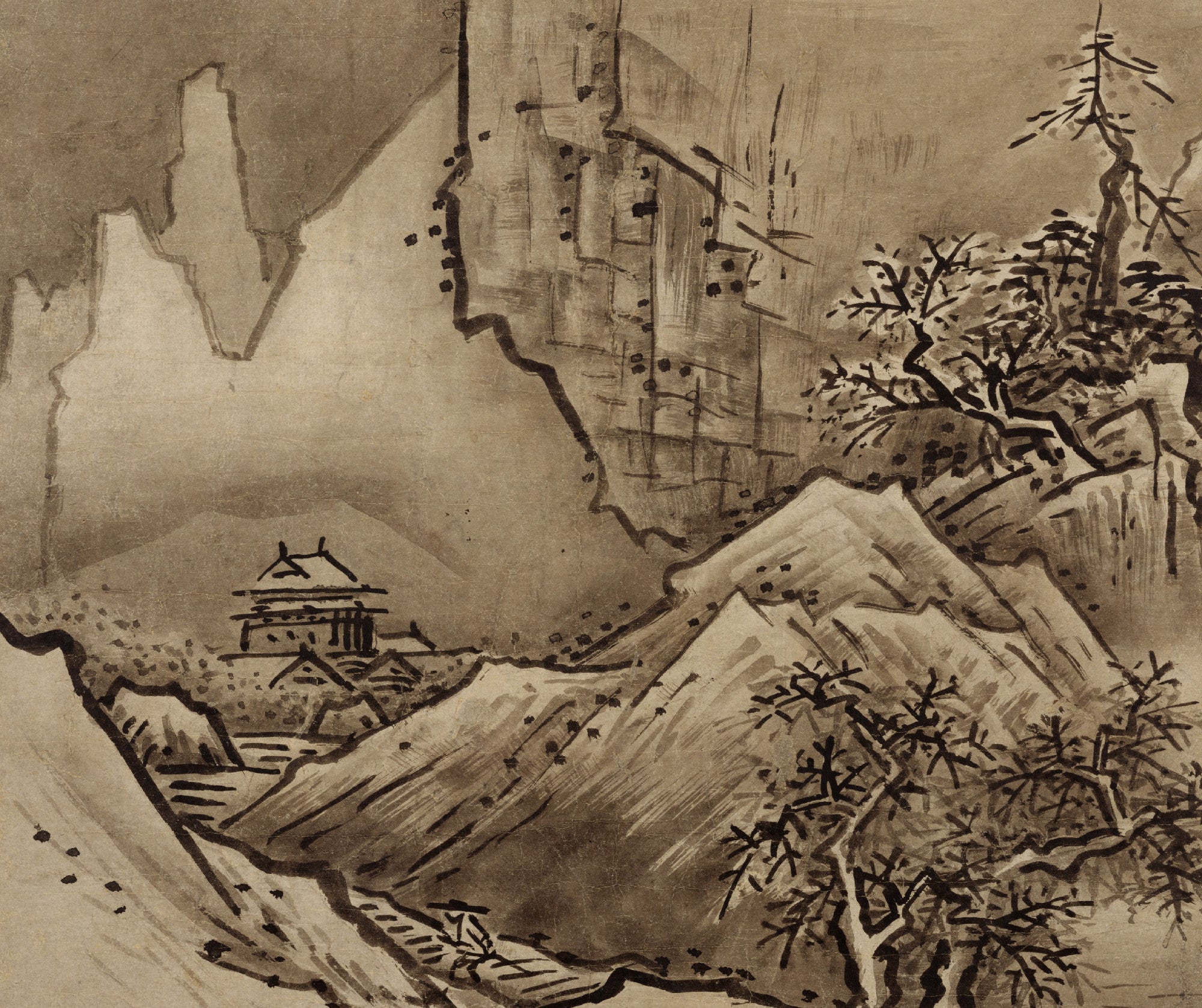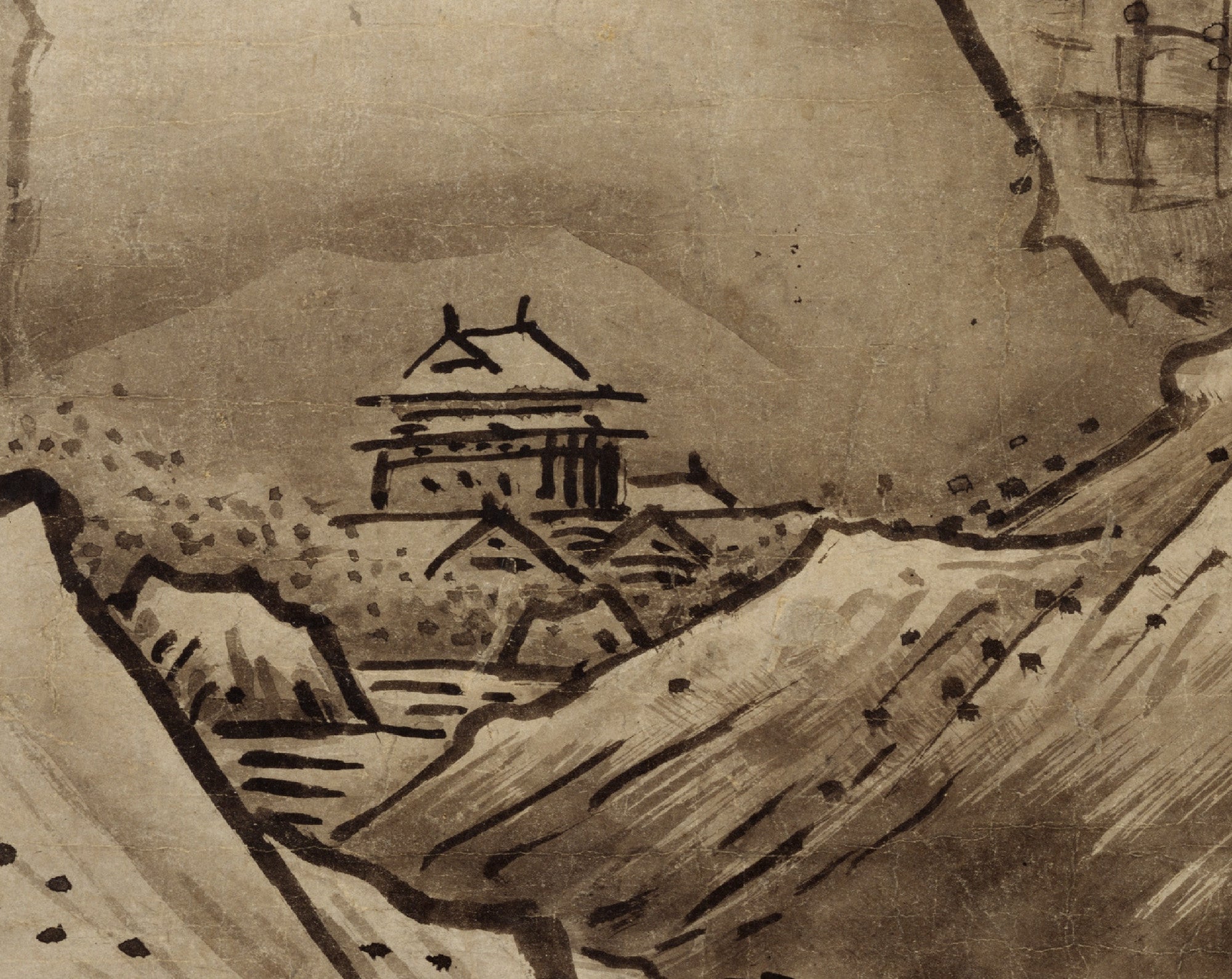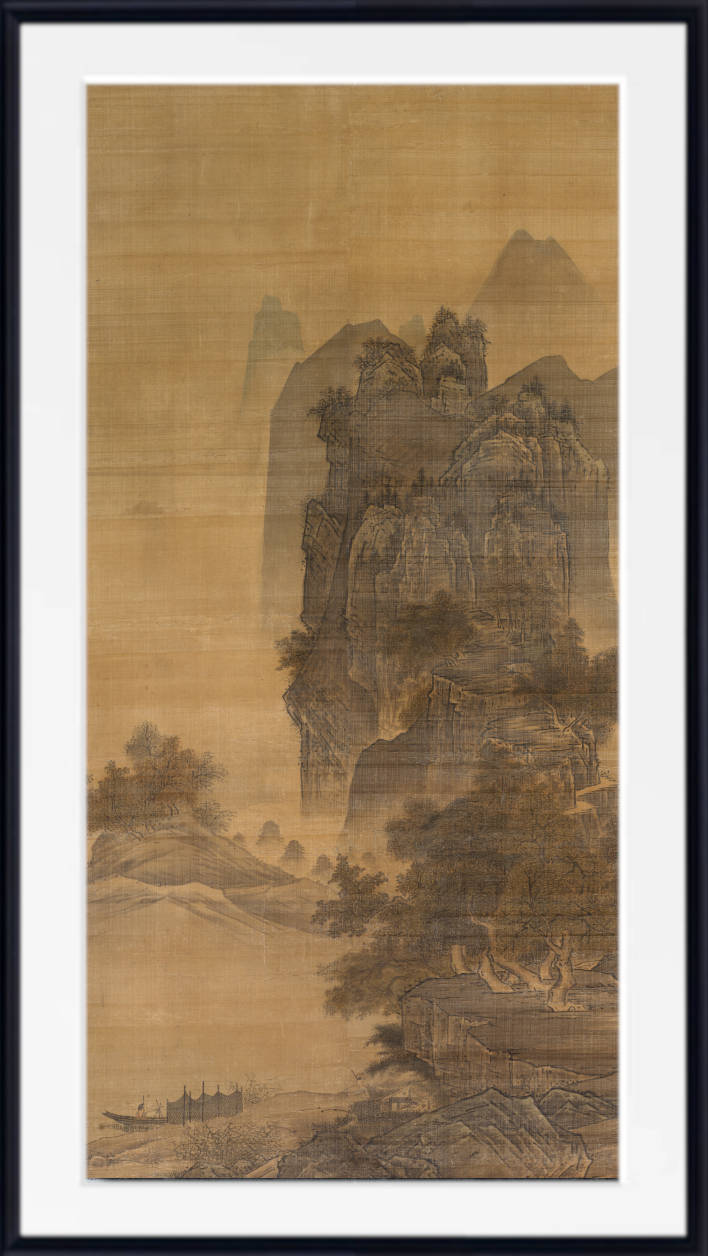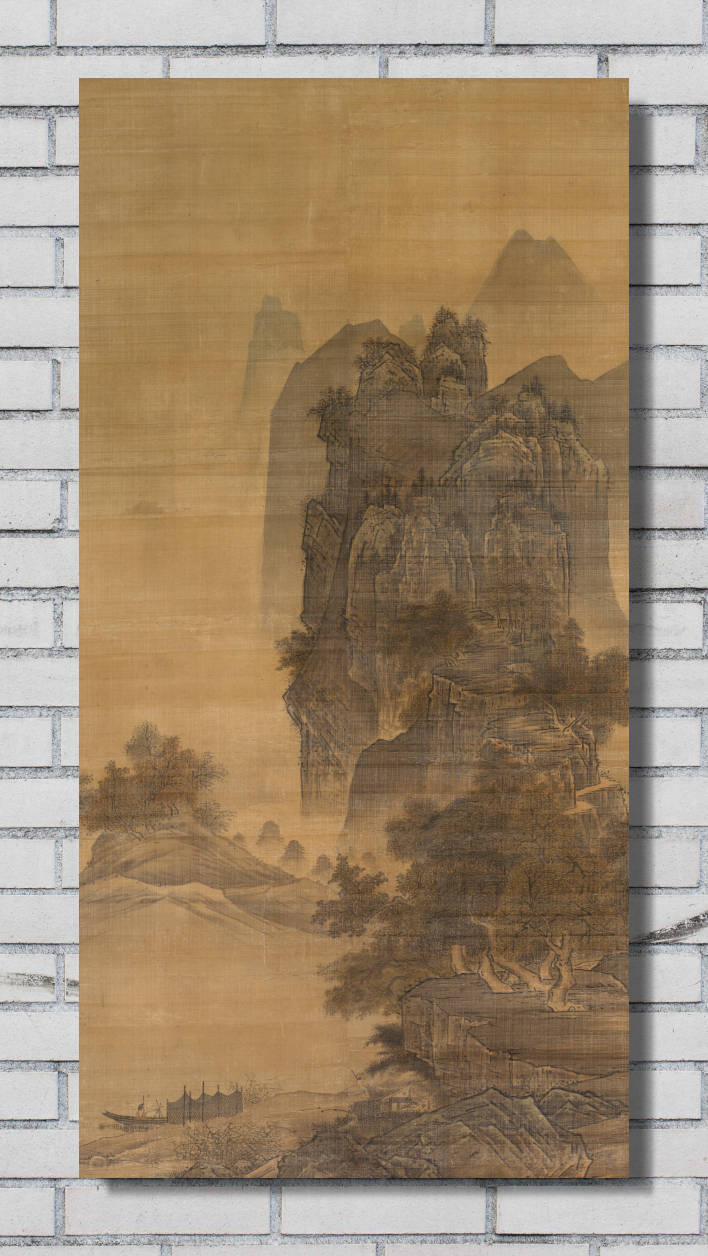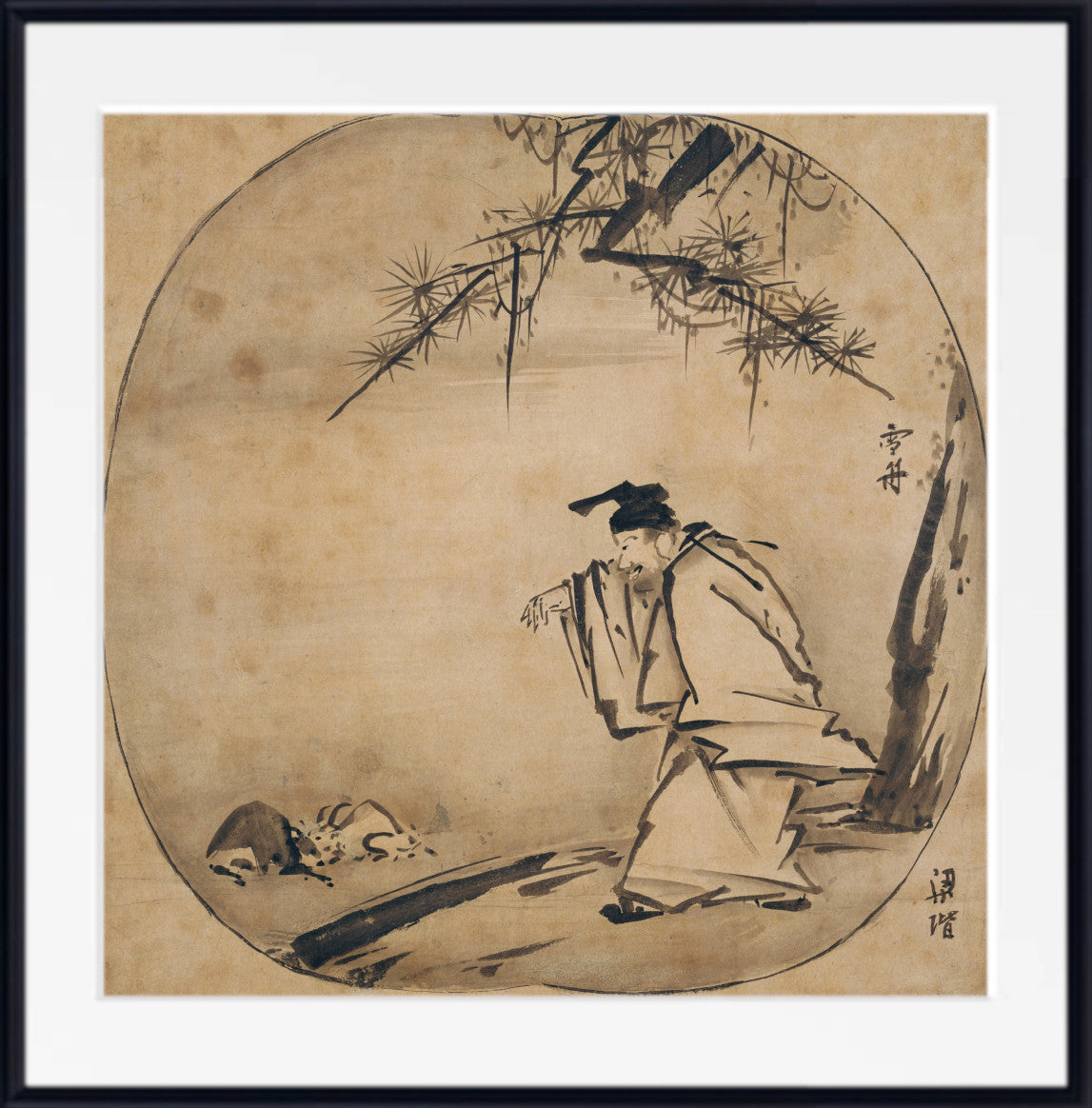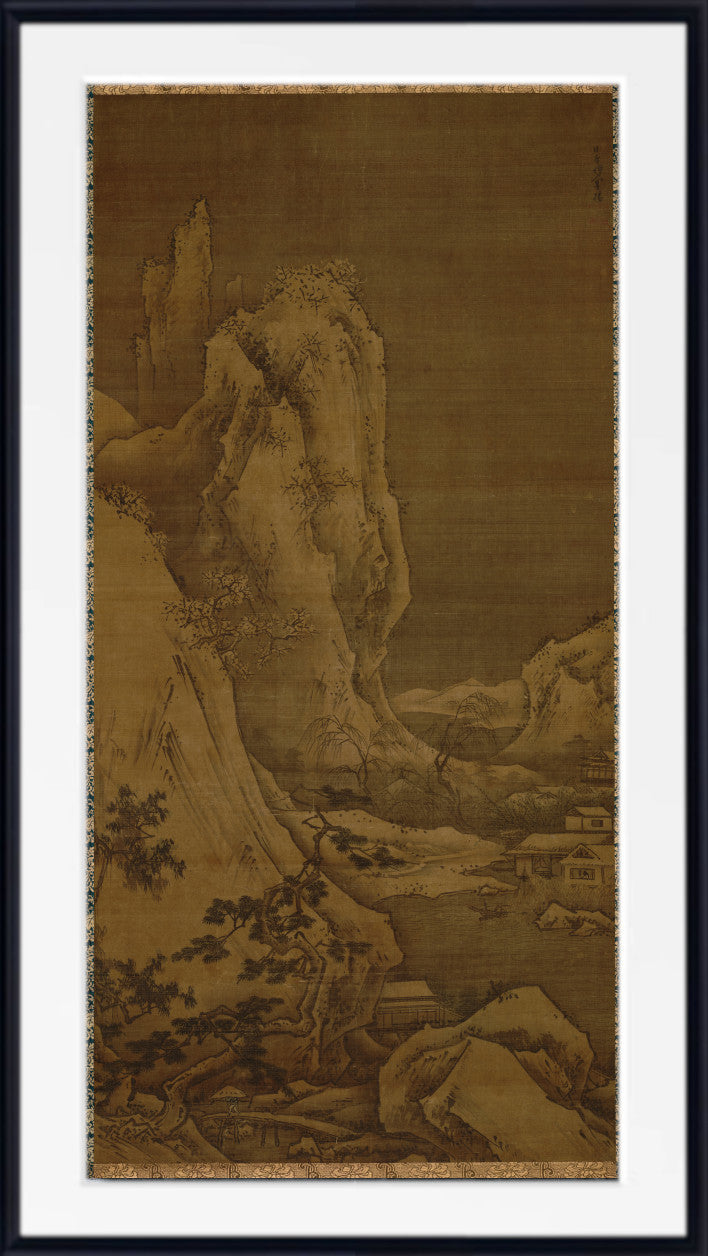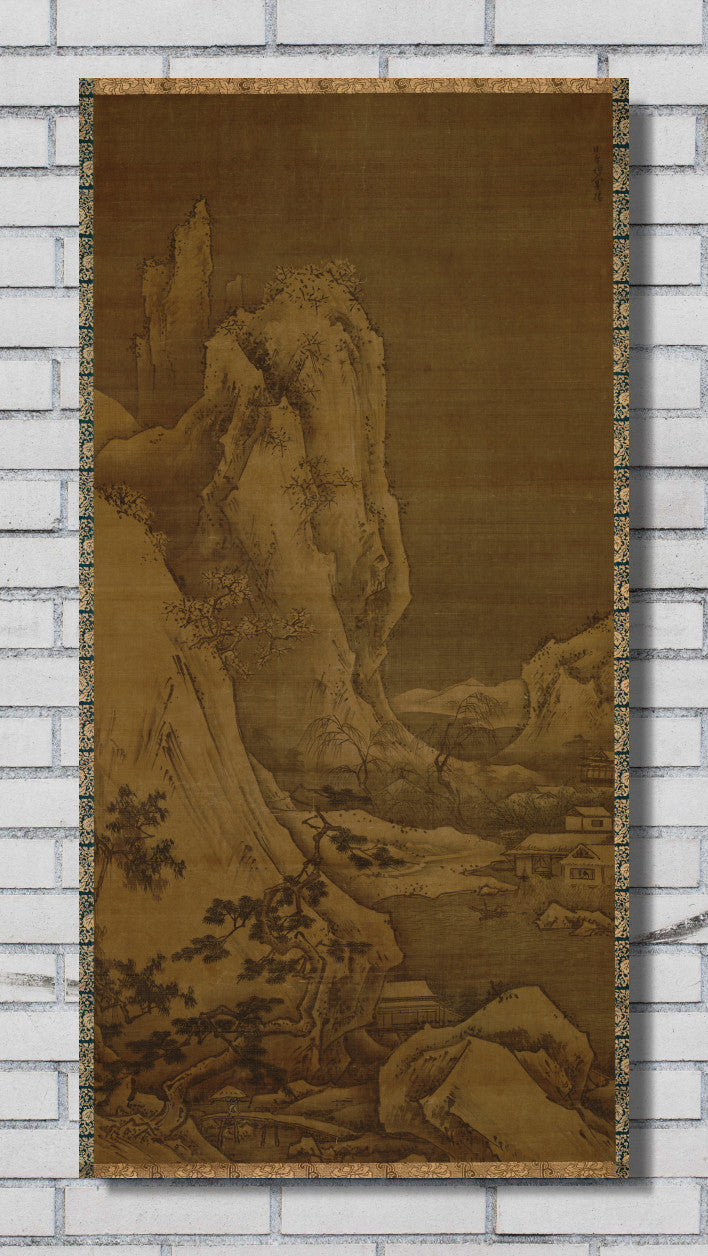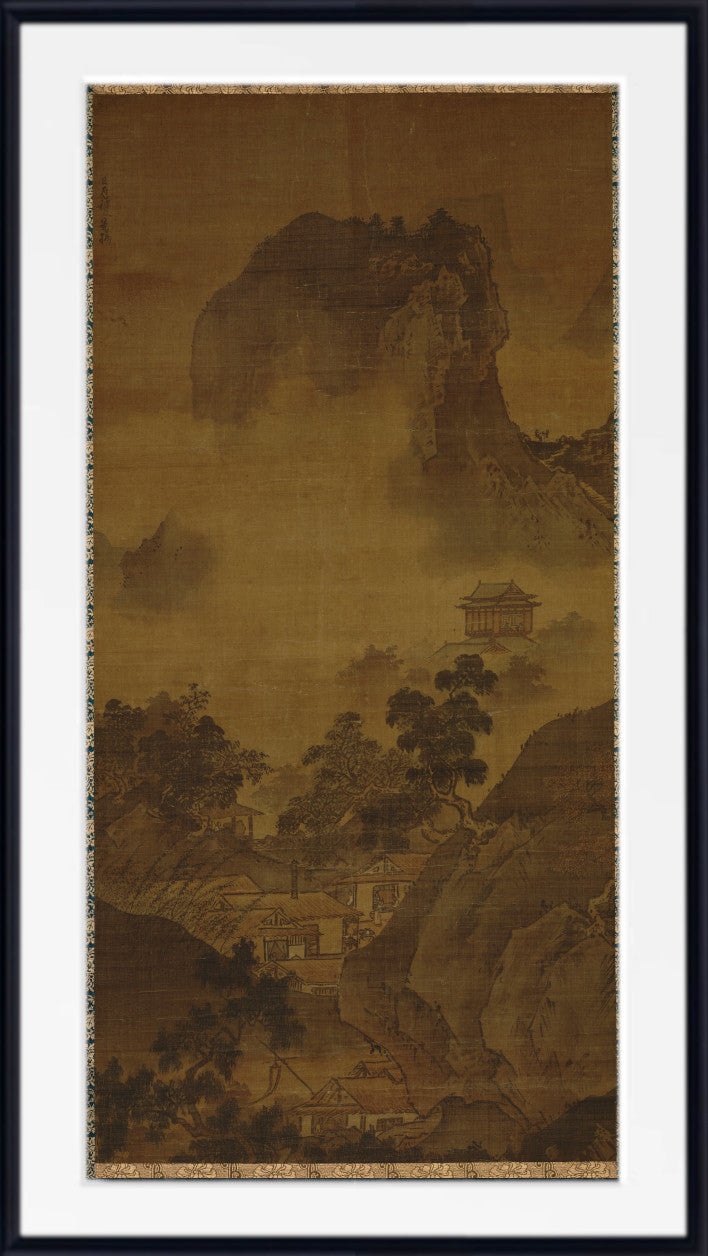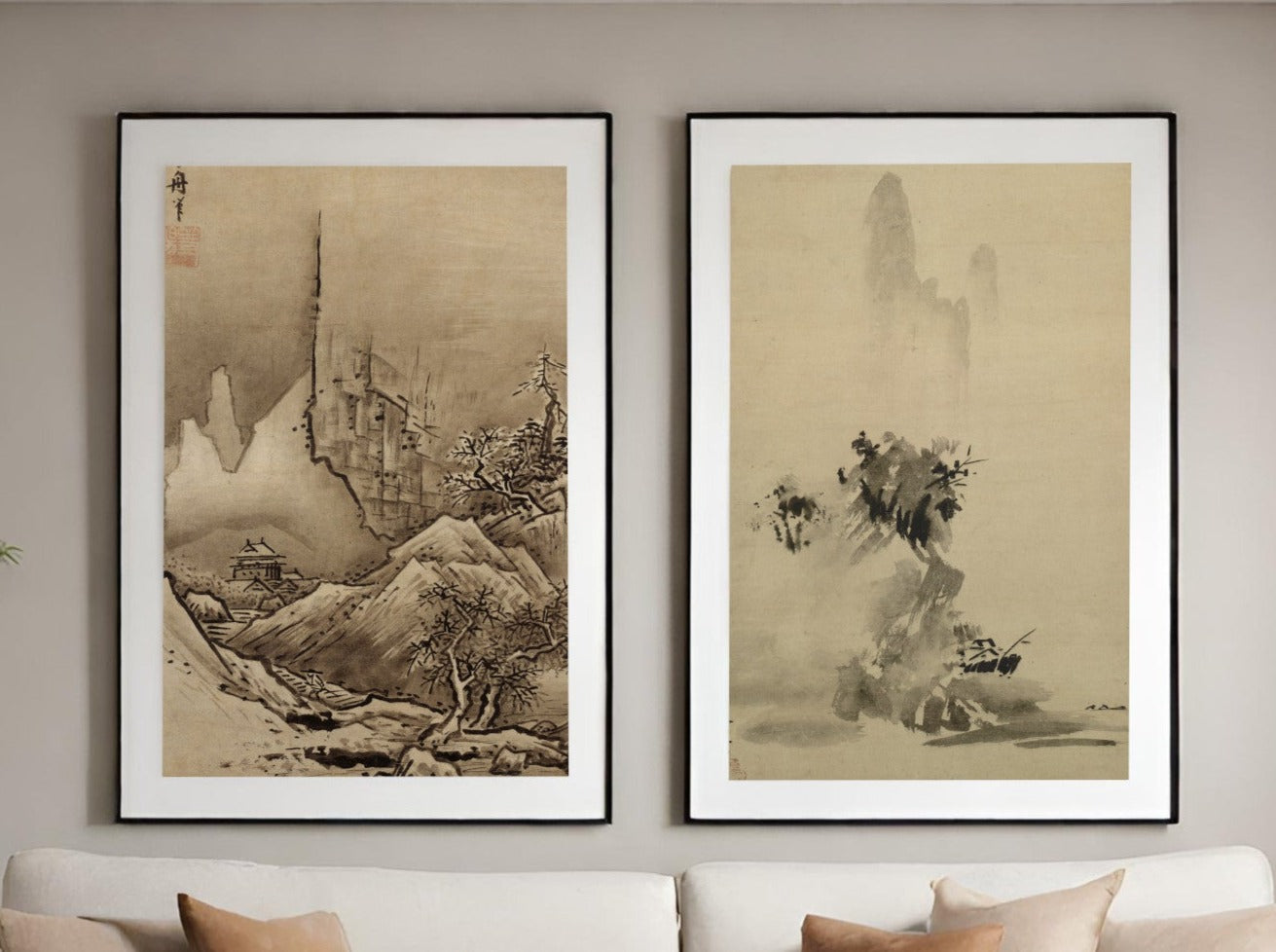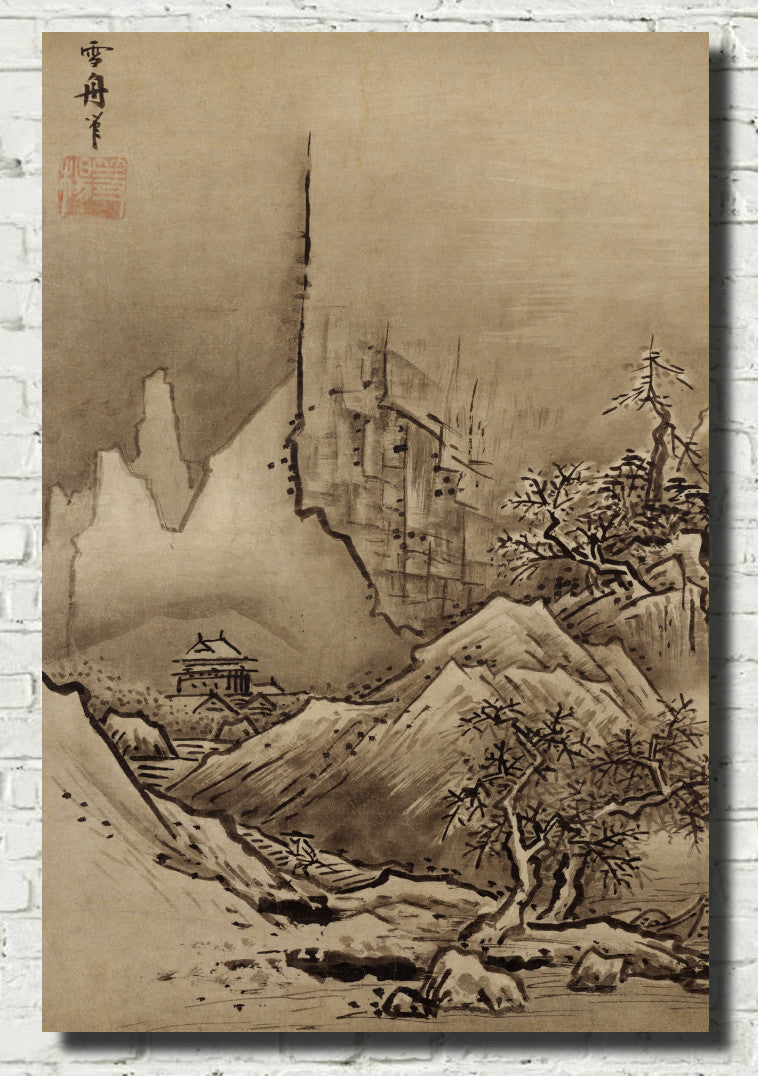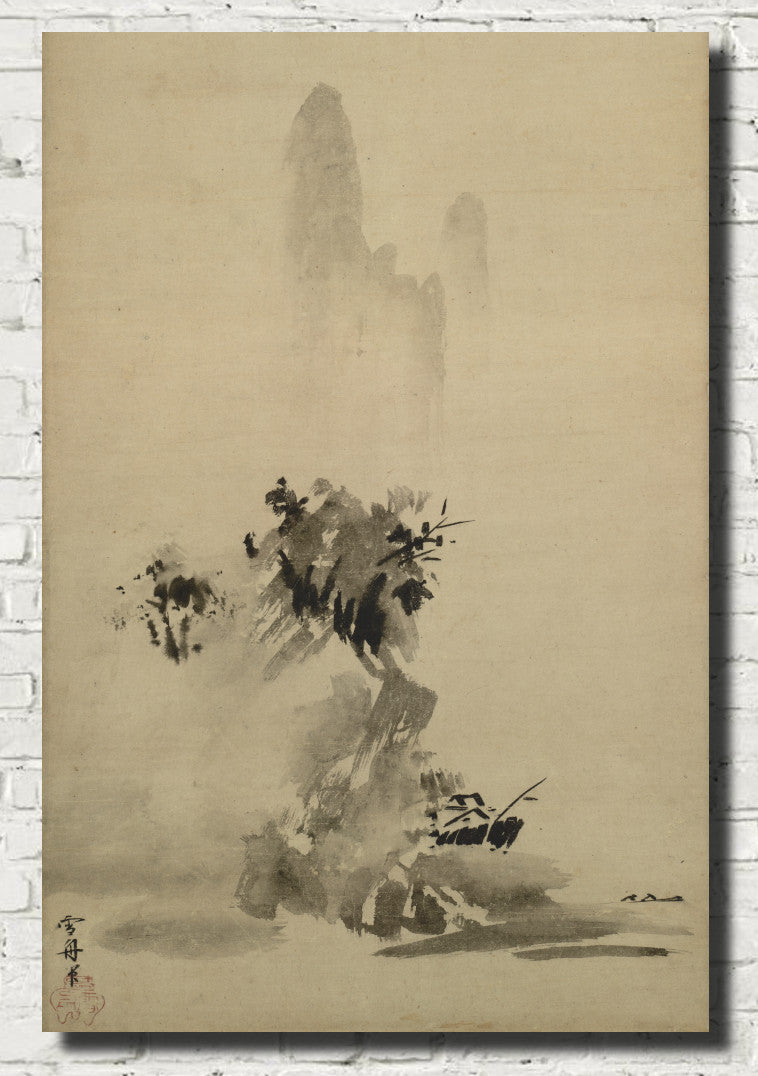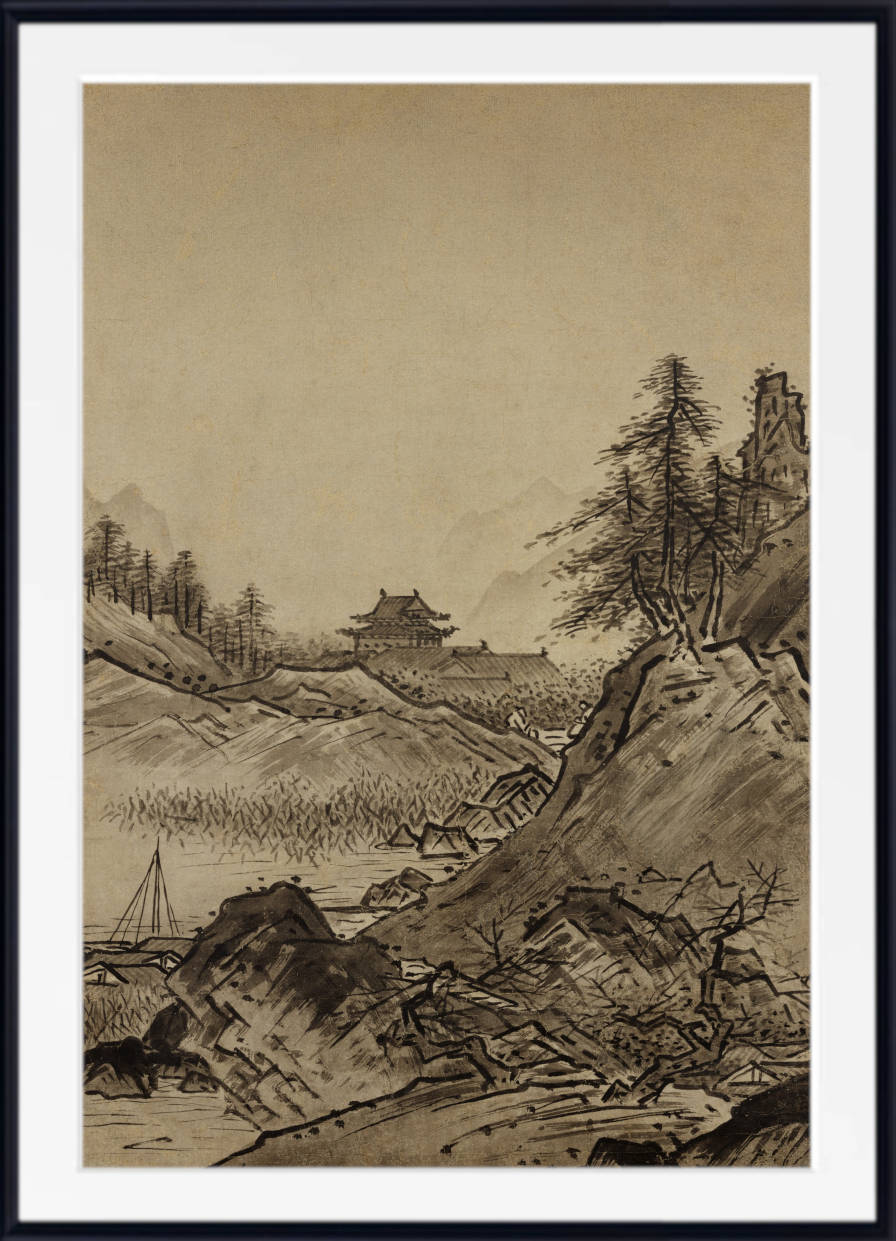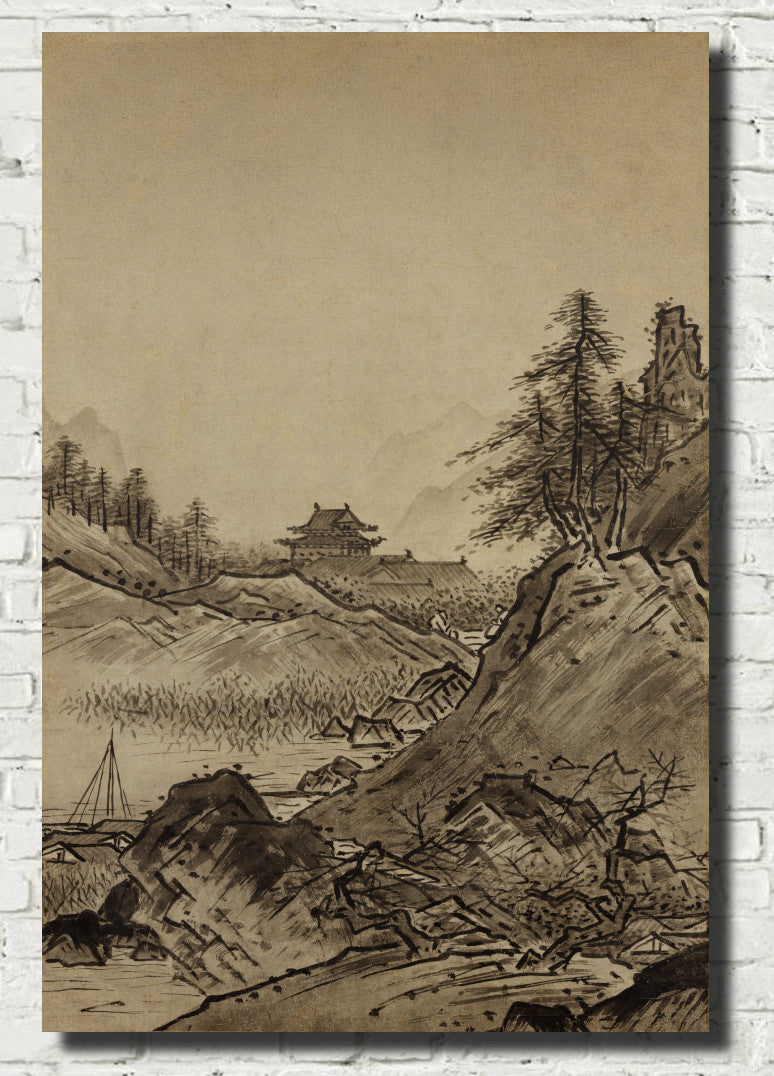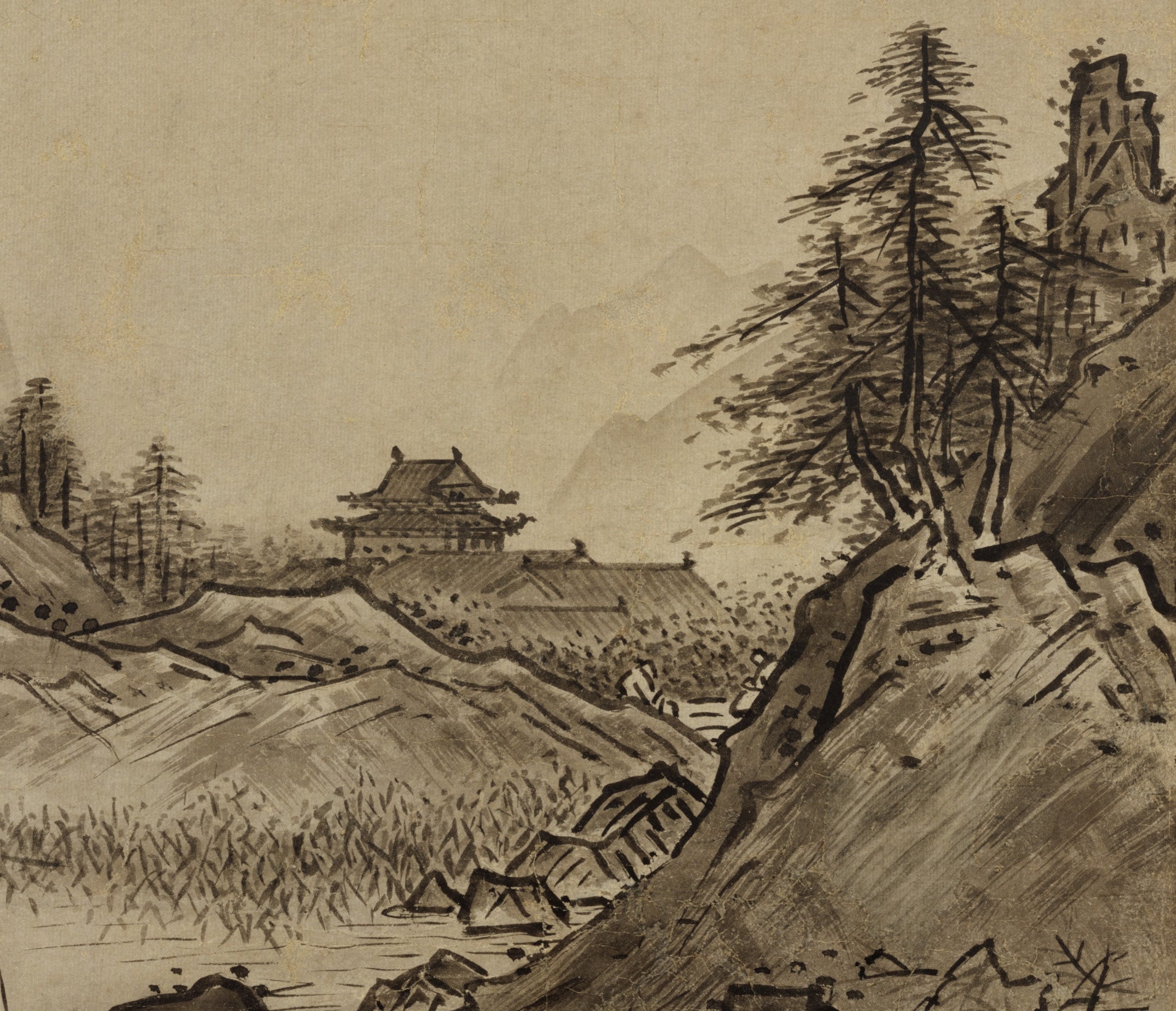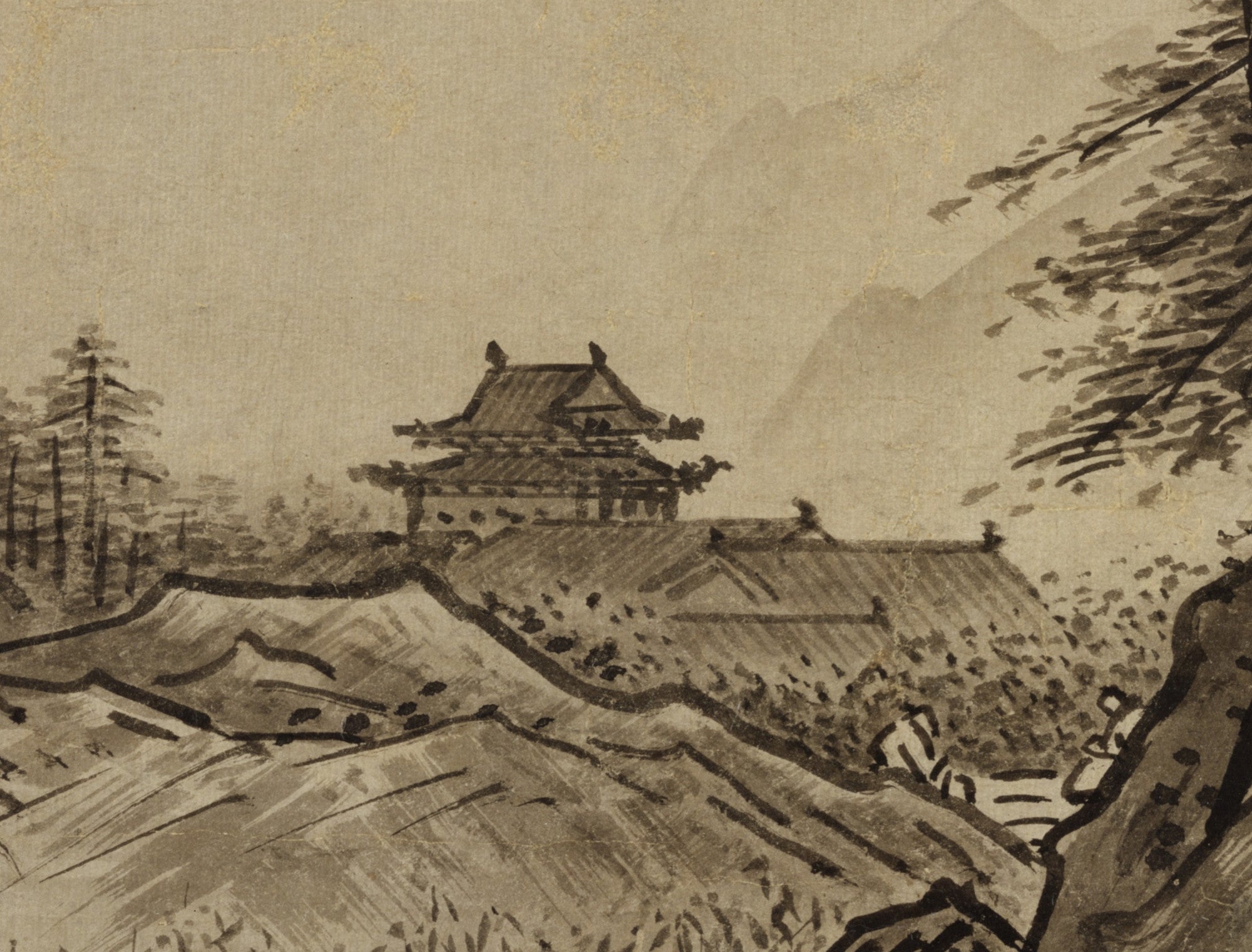Haboku-Sansui Complete Scroll, Sesshū Tōyō Splashed Ink Landscape
Couldn't load pickup availability
BUY WITH CONFIDENCE
Haboku-Sansui Complete Scroll, Sesshū Tōyō Splashed Ink Landscape
Haboku sansui is a splashed-ink landscape painting on a hanging scroll created in 1495 by the Japanese artist Sesshū Tōyō during the Muromachi period. This ink wash painting is classified as a National Treasure of Japan and currently held by the Tokyo National Museum.
The bottom landscape portion of the scroll is available as a fine art print or canvas panel.
Overview of Haboku-Sansui
Haboku sansui, a mesmerizing ink landscape painting by the renowned Japanese artist Sesshū Tōyō, stands as a testament to the power of minimalism and abstraction in art. Created in 1495, this masterpiece continues to captivate viewers with its bold brushstrokes and ethereal atmosphere, offering a glimpse into the spiritual and artistic world of medieval Japan.
The Artist Behind the Masterpiece
Sesshū Tōyō: Zen Monk and Master Painter
Sesshū Tōyō (1420-1506) was a prominent Japanese Zen Buddhist monk and painter of the Muromachi period. Renowned for his landscapes and ink wash paintings, Sesshū's work bridged the gap between Chinese and Japanese artistic traditions, leaving an indelible mark on the development of Japanese art.
Artistic Journey and Influences
Sesshū's artistic journey began in his youth at the Hōfukuji temple in Okayama Prefecture. He later studied under the famous painter Tenshō Shūbun in Kyoto, where he honed his skills in the gentle and lyrical style of the Shūbun school. However, it was Sesshū's travels to China in 1468-1469 that profoundly influenced his artistic vision, leading to the development of his unique and powerful style.
Haboku Sansui: A Closer Look
The Technique of Haboku
Haboku, meaning "splashed ink," is a technique in East Asian ink wash painting that emphasizes spontaneity and abstraction. In Haboku sansui, Sesshū masterfully employs this technique to create a landscape that hovers between representation and abstraction, inviting viewers to engage their imagination and spiritual insight.
Composition and Elements
The painting depicts a misty mountain landscape with a few key elements:
- Mountain peaks: Bold, angular brushstrokes suggest towering mountains emerging from the mist.
- Trees: Delicate, wispy lines represent trees clinging to the mountainsides.
- Water: Negative space and light ink washes evoke the presence of water and mist.
- Buildings: Subtle hints of man-made structures are barely visible, emphasizing nature's dominance.
Symbolism and Meaning
In Zen Buddhism, landscape paintings often serve as tools for meditation and spiritual contemplation. Haboku sansui embodies this tradition, with its misty, ethereal quality suggesting the impermanence of the physical world and the interconnectedness of all things.
The Significance of Haboku Sansui
Innovation in Japanese Art
Haboku sansui represents a significant departure from the more controlled and detailed style of earlier Japanese landscape painting. Sesshū's bold, expressive brushwork and use of negative space pushed the boundaries of artistic expression in Japan, influencing generations of artists to come.
Bridging East and West
While deeply rooted in East Asian artistic traditions, Haboku sansui's abstract qualities have drawn comparisons to modern Western art movements. This cross-cultural appeal has contributed to the painting's enduring fame and relevance in the global art world.
Preservation and Exhibition
Current Location
Haboku sansui is currently housed in the Tokyo National Museum, where it is designated as a National Treasure of Japan. Due to its age and delicate nature, the painting is only displayed for limited periods to ensure its preservation.
Conservation Efforts
Conservators at the Tokyo National Museum employ state-of-the-art techniques to preserve this priceless artwork. These efforts include careful climate control, protection from light damage, and periodic assessments to monitor the painting's condition.
Legacy and Influence
Impact on Japanese Art
Sesshū's innovative approach in Haboku sansui had a profound impact on the development of Japanese ink painting. His bold, expressive style influenced the emergence of the Unkoku-rin school of painting and continued to inspire artists well into the Edo period and beyond.
Global Recognition
In recent decades, Haboku sansui has gained international recognition as a masterpiece of world art. Its minimalist aesthetic and spiritual depth resonate with contemporary viewers, transcending cultural and temporal boundaries.
Experiencing Haboku Sansui
Viewing Techniques
To fully appreciate Haboku sansui, viewers are encouraged to:
- Observe from different distances to experience both the overall composition and fine details.
- Allow the eye to wander, discovering new elements and interpretations with each viewing.
- Reflect on the painting's spiritual and philosophical implications.
Conclusion
Sesshū Tōyō's Haboku sansui stands as a pinnacle of Japanese ink painting, embodying the artist's mastery of technique, deep spiritual insight, and innovative vision. As we continue to study and admire this remarkable work, we gain not only an appreciation for Sesshū's genius but also a window into the artistic and philosophical world of medieval Japan. In its misty, abstracted landscape, we find an invitation to contemplation and a timeless expression of the human spirit's connection to nature.
References:
- Brinker, H., & Kanazawa, H. (1996). Zen Masters of Meditation in Images and Writings. Artibus Asiae Publishers.
- Covello, V. T., & Yoshimura, Y. (1994). The Japanese Art of Stone Appreciation: Suiseki and Its Use with Bonsai. Tuttle Publishing.
- Mason, P. (2005). History of Japanese Art. Pearson Prentice Hall.
- Murase, M. (1975). Japanese Art: Selections from the Mary and Jackson Burke Collection. The Metropolitan Museum of Art.
- Stanley-Baker, J. (2014). Japanese Art. Thames & Hudson.


All prints are made using archival art stocks and UV pigment inks to give up to 200 years life. Prints are sold unframed and unmounted.
All orders for unframed fine art prints and original paintings are dispatched within 2 working days of receipt of payment.
Orders for custom framed prints are dispatched within 4 working days.
All orders are fully tracked from dispatch to delivery at your home or business.
All print and original painting orders are fully insured against loss or damage in transit. We refund or replace any damaged or lost orders.
Buy with confidence - read what our satisfied customers have to say - Reviews
Fine art papers are printed without any additional white border Please let us know at the time of ordering if you would like a small additional white border.
Rolled canvas options have an additional white border of approximately 2.5 inches (7cm) on all 4 sides to aid stretching.
Ready to hang canvas panels are stretched on 1.5 inch deep solid pine frames from sustainable forestry sources. The image is mirrored on all 4 sides to give an aesthetically pleasing finish.
Why not have us gift wrap your order and attach a personalised message to the recipient. Available for all orders. Each order is hand wrapped in high quality gift wrap with meatllic ribbon and bow. Your personalised message is printed on a card which is included with your order.
Have your hand wrapped gift delivered directly to the recipient.
Full tracking and insurance included with every order.
Please note design may vary depending upon availability
Just purchase the gift wrap option HERE
We have a wide range of frames in standard sizes and we also make custom size frames.
To order a framed print:
1. select the print size you would like along with the print materials (matte paper, fine art paper).
2. Add your print choice to the basket.
3. Choose from our range of frames
4. Select the same size as the print you have added to your basket. If the frame size you want is not listed please contact us
5. Choose from the mount or no-mount option
6. Add your frame choice to the basket
7. Proceed to checkout.
Why Choose GalleryThane?
- Printed and framed in-house
- Free UK delivery
- Free EU and USA delivery on orders over £200
- Tracking and insurance included in every order
- Fast 1-3 day dispatch
- Gift wrapping service available
- Gallery quality materials
- Sustainable, eco-friendly packaging
- Great customer support
What makes our Prints and Canvas Panels so special

Latest Giclee Printing Technology
We have invested in the latest wide format print technology to produce museum quality giclee prints utilising the highest quality pigment inks to give outstanding colour reproduction.

Museum Quality Archival Fine Art Papers
We print on the finest quality fine art papers with textured, smooth and lustre finishes for prints which last a lifetime.
From aceo miniatures to 40x80 inch large format, every print has our lifetime quality guaranteee.

Solid Wood Frames, Cotton Canvas
All of the wood for our canvas panels and frames is responsibly sourced from manages forests. Our cotton canvas is completely seedless for the highest quality reproduction possible.

